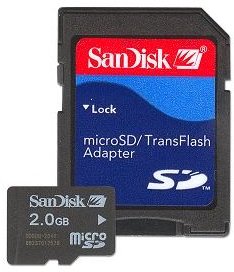Step by Step Guide On How to Remove Write Protection from Card Reader
Can’t Save to Flash Card?
The obvious benefits of card readers – that they allow us to easily read information stored on a variety of flash storage devices – are thrown into question when suddenly they can’t write to the flash cards any longer.
Usually, this problem is down to the switch on the side of the card – a sort of write enable/write protect switch similar to those found on 3.5” floppy disks.
One other reason for this is that the card itself has become corrupt in some way, and the result of this is that the reader “detects” that the flash card cannot be written to. This results in a problem – reformatting the card will in most cases resolve the problem, but without read access to the card, reformatting cannot take place. If you knew how to remove write protection from a card reader, however, you would be able to reformat the flash storage card. This is rare, however, and problems with write protection on flash cards and readers are down to the card’s switch.
That is, if the problem was with the card reader…
Dangers of Removing Write Protection
Obviously, you don’t want to remove any write protection unless you really have to. After all, it is an easy enough mistake to make in accidentally deleting vital files or using the cut command and forgetting to paste them later on.
Whatever you have saved to your flash memory card, you should only make the media writable while you are planning to save additional files to it or when you actually intend on deleting data. At all other times, you should leave the write protection enabled in order to protect your data.
Always keep a backup of anything you have stored on flash media, incidentally; while sturdy enough media, the data can still be lost or corrupted if the card is exposed to extremes of temperature, or dropped.
(Image via www.sandisk.co.uk)
How to Remote Write Protection from a Card Reader
Generally there are two types of card reader – the USB thumb drive type with a small slit in the side or end for inserting flash memory cards, and the more popular card reader drive that connects via USB and has 2 or more slots for different sizes of card.
The small thumb-drive style devices have switches on the side of them that need to be pushed one way or the other, usually with a small arrow and the word “lock”. Occasionally these are underneath, but generally speaking the switch can be found on the side.
Similarly, flash memory cards are equipped with a small switch – these are usually quite obvious and appear as a different colour to the rest of the card.
If you use microSD, you will notice that there is no such write-protect facility. However if you use a SD standard adapter you can will find that these are equipped with write protect switches. Again, pushing the switch in the required direction and ensuring it doesn’t catch on anything as you insert it will allow you to write enable your flash card.
